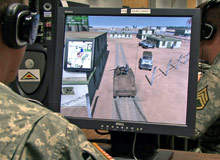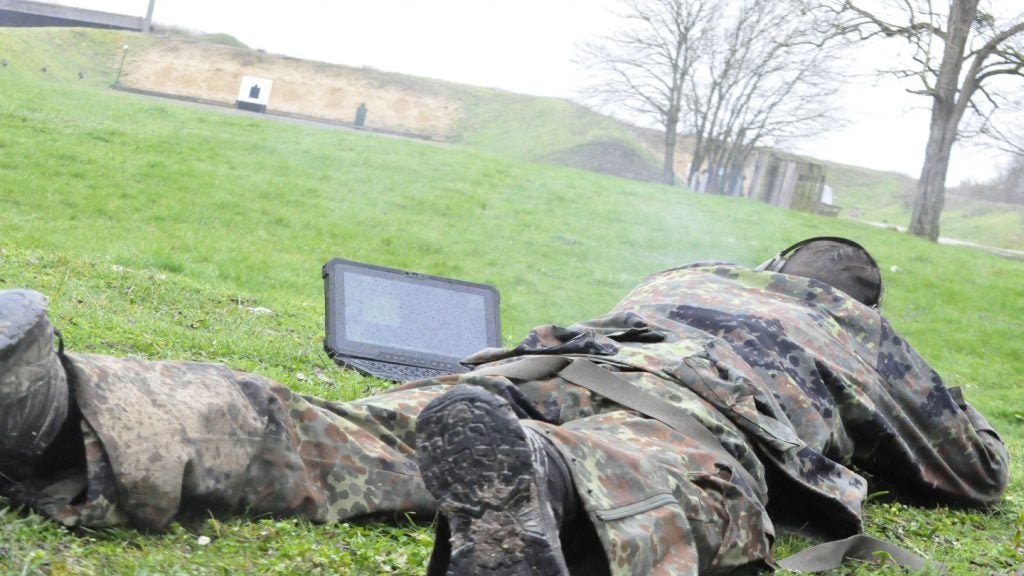
In recent years, virtual training has been one of the largest areas of investment for defence companies. In the run up to the ITEC 2010 event in London, IP Video Systems president Johan Pirot tells army-technology.com about 3D virtual training and how he believes it will revolutionise the next generation of virtual environment.
Army-technology.com: What are the benefits of virtual training as opposed to conventional training?
Johan Pirot: The obvious advantage is the lower cost. If you factor in everything required, aircraft training, for example, is incredibly expensive. You have to consider the cost of buying, maintaining and fuelling the planes and on top of that paying the pilots and engineers, not to mention the obvious dangers involved in live military exercises.
With virtual systems there is a lot less that can go wrong, and they can be maintained by a very small group of people. In the long run, the cost of a virtual system is lower, and it is a lot safer.
AT: Can a virtual training environment be a substitute for real-life training?
JP: Yes and no. The advances that have been made in this field have made it a good alternative because of the advantages already mentioned. Of course, real-life training is required in certain areas. It is, however, possible for simulations to replace and improve certain areas of training and as the technology advances, replace more and more training exercises.
How well do you really know your competitors?
Access the most comprehensive Company Profiles on the market, powered by GlobalData. Save hours of research. Gain competitive edge.

Thank you!
Your download email will arrive shortly
Not ready to buy yet? Download a free sample
We are confident about the unique quality of our Company Profiles. However, we want you to make the most beneficial decision for your business, so we offer a free sample that you can download by submitting the below form
By GlobalDataAT: What have been the biggest developments in virtual training in recent years?
JP: The biggest improvement of recent years is the overall usability of the systems. The most important aspect is to achieve as realistic a scenario as possible. Obviously, as computer and visualisation technology improves, the system becomes ever-more realistic. The more realistic it is, the better the training. High definition (HD) has also made a huge difference to the realism of training scenarios.
AT: What technologies can we expect to see from this part of the industry in the future?
JP: 3D is seeing the biggest investment at the moment. In the past all training systems were in 2D and, in the same way as it has with movies, the next logical step was to create the same environments in three dimensions.
There are some systems around that already use 3D but they are rare and cannot compete with the current systems. It is going to be one of these advances where as the commercial side of the technology improves, the military training side will start to take full advantage of it. This is the way it happened with HD.
AT: If UK military budgets are cut, do you fear programmes such as this could be hit?
JP: Yes, and we have already begun to see the effects of this. Some systems that were very popular just a year ago are now either not being used or even being purchased by armed forces in an attempt to cut costs.
We have found over the years that the defence sector is a lot quicker to pick up on technology like this than other sectors. Simulation for oil and gas, and medical training have been hit harder and were slower to take off in the first place.
AT: How long does it take for a product to get to a stage where it is ready for commercial use?
JP: That is a difficult question to answer. For IP Video, it would be about 12 months before we felt confident about sending out the system. Of course this varies from company to company. Designing the environments takes a lot longer, while improving its usability is a quicker process.
The basis of most simulations involves the same computer programming. So as more and more systems are produced, the development becomes quicker.
AT: How do you decide when the technology reaches “military grade” usability?
JP: That is not really for us to decide. There is no test to determine if a system is of military standard, and as with any commercial product, generally it is up to the buyer to decide if the product is ready. As we are on the developing end, working on the system from the customer’s perspective, we say our work is done when the system is as usable as it can be.
AT: Which kind of companies invest the most in virtual training?
JP: Virtual training is one of the most popular systems for defence contractors to invest in. All of the major companies, including Boeing and Northrop, are investing heavily in this technology. There are a lot of smaller companies, like IP Video, that are investing in it, but in a much more specific way by focusing on their own particular area of expertise.
AT: Many military exercises involve joint training involving several countries. Is this still possible in a virtual environment?
JP: It is certainly still possible. The only problem is that it would require an internet connection that may involve a certain amount of lag. As you can appreciate, if you connect armed services in the US and Europe there is going to be a delay. Sometimes the lag makes no difference, for example a squadron of FA-18s could conduct a joint exercise with an AWACS unit on the other side of the world without any real problems.
AT: Apart from global military powers, which countries are investing in this technology?
JP: The most surprising for me are countries like India and South Korea. They have begun to invest heavily in their militaries and are seeing virtual training as a major part of overall investment.
There is also the usual group, such as Canada, which is a major customer, as are most Nato countries. As the technology has improved, more and more countries are seeing virtual training as a realistic long-term investment.
ITEC 2010 will take place on 18-20 May in London, UK.




